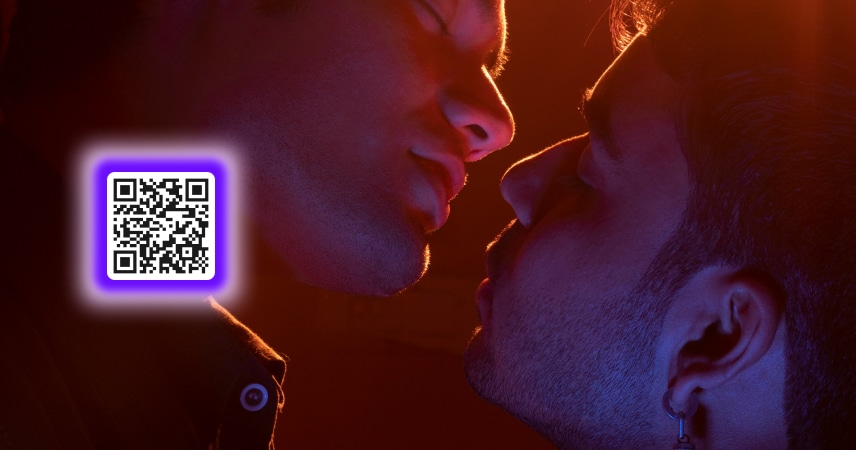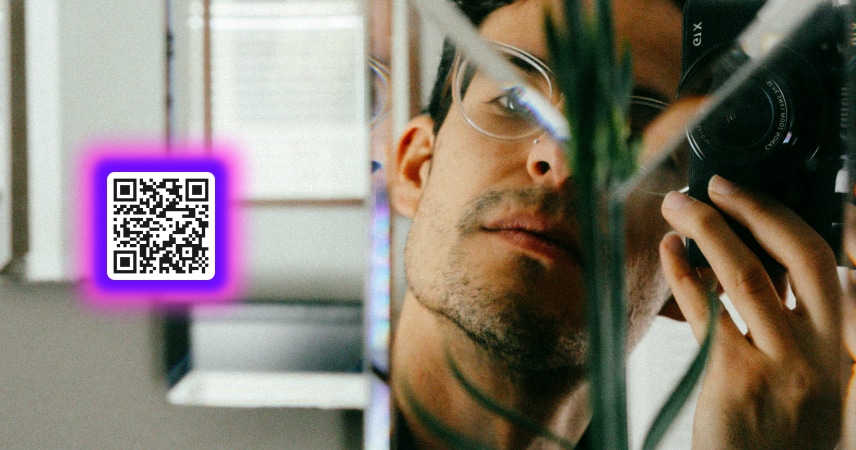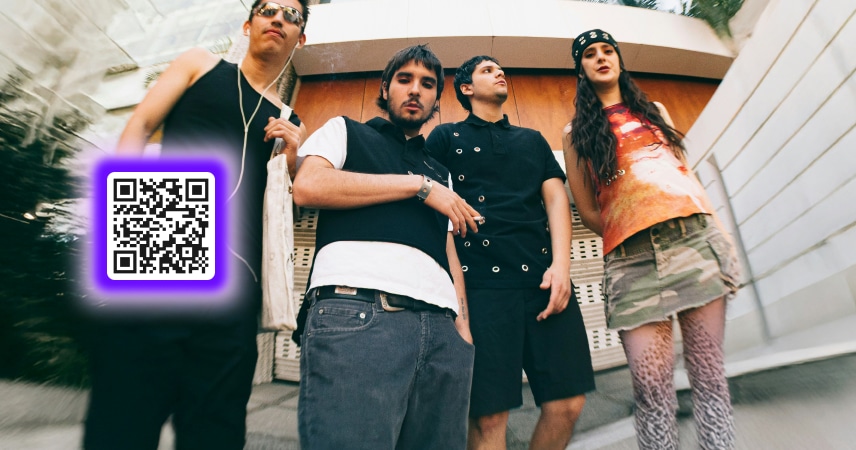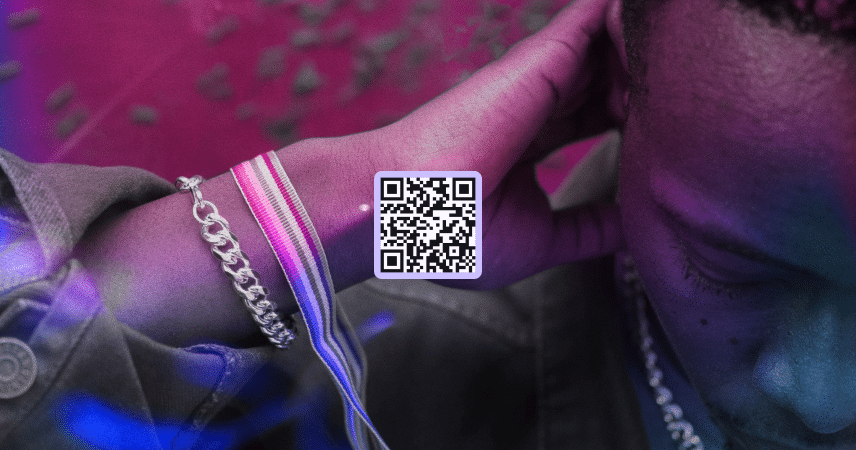
The year was 1969; the month was June. Police in New York City raided Stonewall, a gay bar in Greenwich Village. What followed were the Stonewall Riots – a decision by that gay community to take a stand, be visible, and promote equal rights.
One year later, Gilbert Baker was born in Kansas. He joined the Army and served as a medic in San Francisco where he became a part of the gay culture after his discharge. He taught himself to sew and immersed himself into the community, both as a gay and drag queen. He also became friends with Harvey Milk, the first openly gay man elected to a political office in California.
Milk asked Baker to create a symbol for gay pride – one that could be used during the coming June Gay Pride celebration.
Pride Flag Launched
The Pride Flag was created by Baker – a banner of 8 horizontal stripes, each one representing aspects of gay life. According to Baker, flags were the most powerful symbol of pride. So, he and a bunch of volunteers hand-sewed flags to be flown at the 1978 Gay Freedom Day parade. The gay pride flag was born, more commonly known as the rainbow flag.
Baker decided to mass produce the flags. Because of issues with pink and turquoise stripes, those stripes were removed. Indigo was replaced by a normal blue. So, the rainbow flag ended up with six stripes.
In 1994, Baker fashioned a mile-long version of the rainbow flag to celebrate the 25th anniversary of Stonewall. That cemented the rainbow flag as the symbol of the of LGBTQ pride movement and is flown all over the world during Pride events. What’s more, the rainbow flag now appears everywhere, especially during Pride month – clothing, shoes, jewelry, purses, socks, and more. And during pride months for the last many years, the White House was lit in the colors of the rainbow flag too.
What the Colors of the mostly original flag, with six stripes, Mean
- Red is for life
- Orange is for healing
- Yellow represents sunlight
- Green represents nature
- Blue is for peace, harmony, and art
- Violet is for spirit
Variations on a Theme
Once the pride flag was created, it became the symbol of the entire LGBTQ+ community for years.
But over time, specific LGBTQ+ communities decided it was time to create their own pride flag. And others decided to “improve” upon the original pride flag to be more representative of the entire community.
Most notable among the universal pride flag variations were the Progress Pride Flag and the Philadelphia Pride Flag.
The Progress Pride Flag – Black and Brown Stripes and More
The Progress Pride Flag was created by Daniel Quasar in 2018. It has the original pride flag colors, but other stripes fashioned in an arrow to represent that progress for inclusion has been made but more must still be done.
The black and brown stripes represent LGBTQ people of color who remain marginalized, along with those living with HIV/AIDS or who have died from the disease. The pastel colors of light blue and pink represent the trans community.
In 2021, UK designer Valentino Vecchietti, of the Intersex Equality Rights UK, updated the progress pride flag to include a yellow triangle and a purple circle to symbolize the intersex community. The Intersex Equality Rights UK is an organization that supports the recognition and rights of intersex people and states that about 3% of the UK population is intersex. Adding this symbol obviously makes and even more inclusive Progress Pride Flag.
So, the new progress pride flag now represents many of the diverse populations within the gay community. But this progress pride flag has left out some others who have created their own pride flag. Even some that are included in this Progress Pride Flag have created their own pride flag too. It’s a trend that have been catching on in the past couple of decades and goes beyond the new progress pride flag.
Philadelphia Pride Flag
In 2017 a PR agency working with the Philadelphia “More Color More Pride” campaign for that June came up with a new variation on the original rainbow flag, and this became known as the Philadelphia Pride Flag. This pride flag of eight stripes was created with the intent of representing queer people of color. Thus, the addition of black and brown stripes to the original six dubbed the Philadelphia pride flag much more inclusive.
Many “traditionalists” rejected the flag saying that Baker’s original flag aptly represented all queers. But as the concept of racial diversity continued to grow, the Philadelphia Pride Flag became much more popular, especially for its black and brown stripes.
The Original Pride Flag Gives Way to Specificity
As the original rainbow flag came to refer to the entire LGBTQ+ community, with modifications of course, specific communities began to believe that they needed their own pride flag, especially to be waved or worn during Pride events. And so, over the past few decades, a pride flag has cropped up for just about every gender and orientation. Let’s unpack the results of this trend, one by one.
Gay Men’s Pride Flag
The design of the gay men’s pride flag was created by a Tumblr user in 2019. At first there was controversy. Some accused it of being transphobic; others said it was copying the lesbian flag. Ultimately, it became accepted as their pride flag.
The gay men’s pride flag has five horizontal stripes:
Green and turquoise colors stand for community and healing.
White represents non-binary, transgender, and other gender non-conforming people
Blue, dark blue, and purple stand for love, diversity, and strength.
Bear Pride Flag
In the gay community, the subculture of the bear refers to a man with plenty of facial hair and often a good amount of hair of the rest of his body.
In 1996, a well-known Washington D.C. bear, Craig Byrnes, introduced this pride flag.
The colors represent the countries from which various bears come from and their fur colors. It is a regular at pride events.
Twink Pride Flag
Unlike the bear flag, this pride flag will not normally be seen at Prive events or at a Pride parade. It is used more online.
Twinks are young gay guys, late teens through early 20s, who lack facial and body hair, and are generally slim.
The pink stripe is understood to represent the effeminate nature of twinks, and the interlocking male symbol is a classic symbol of the male gay culture of attraction to the same gender. The yellow stripe represents independence.
Lesbian Pride Flag(s)
There is not a single lesbian rainbow flag, and that is probably why one common flag doesn’t show up at Pride events. One lesbian flag has a double-sided axe, used by female amazons in Greek mythology and symbolizes empowerment.
Other flags are of various colors and various numbers of stripes with other symbols on them. The lipstick flag, for example, represents lesbians who are feminine.
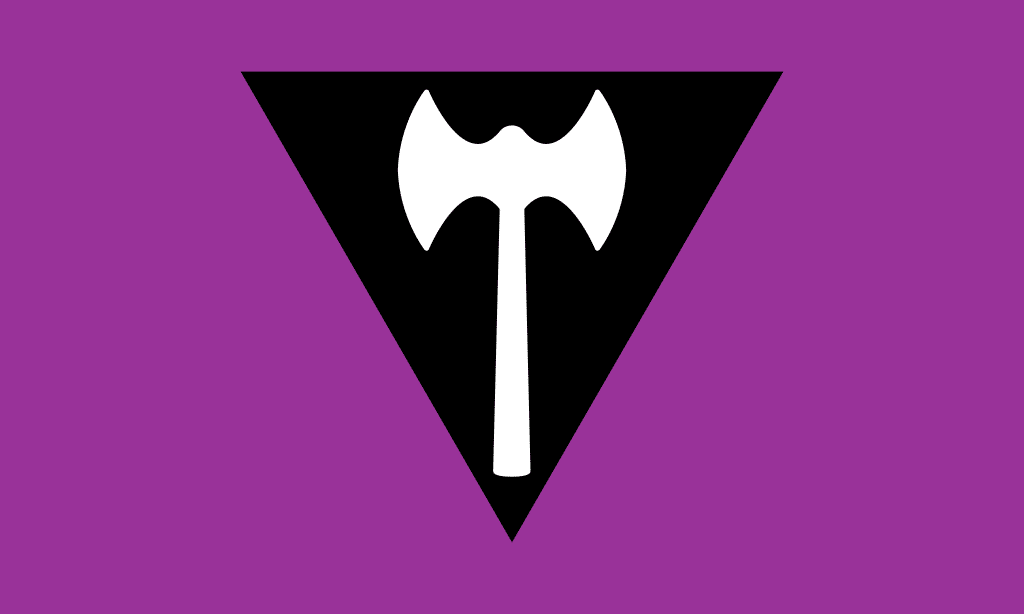
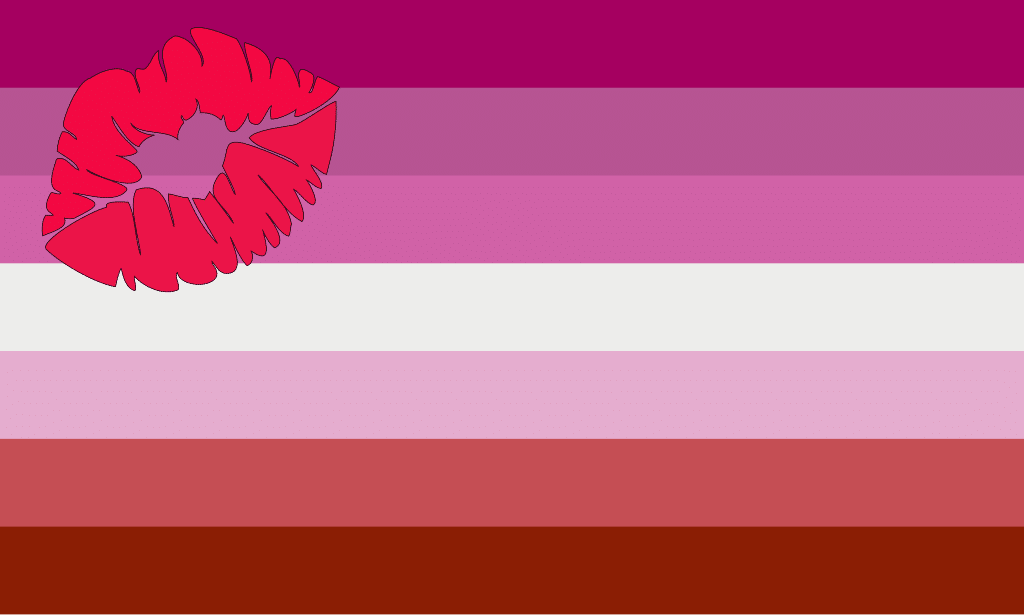
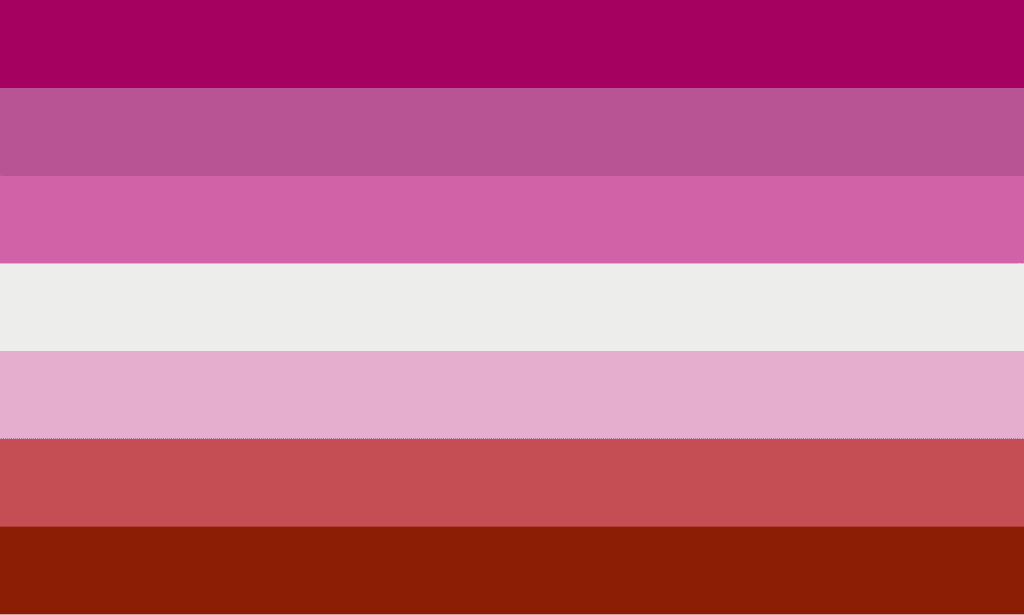
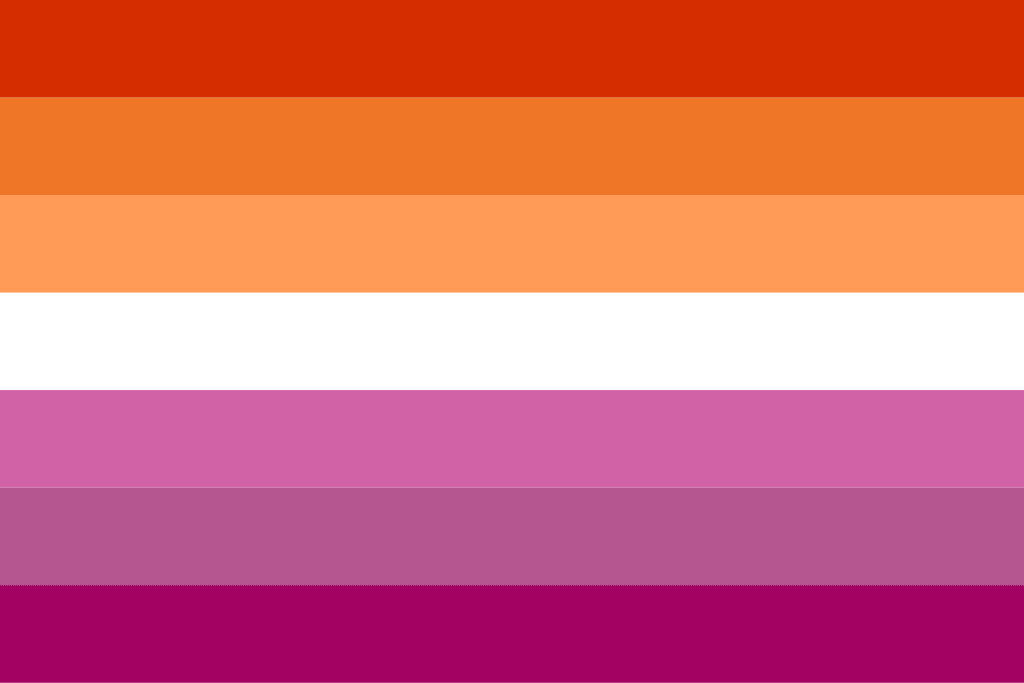
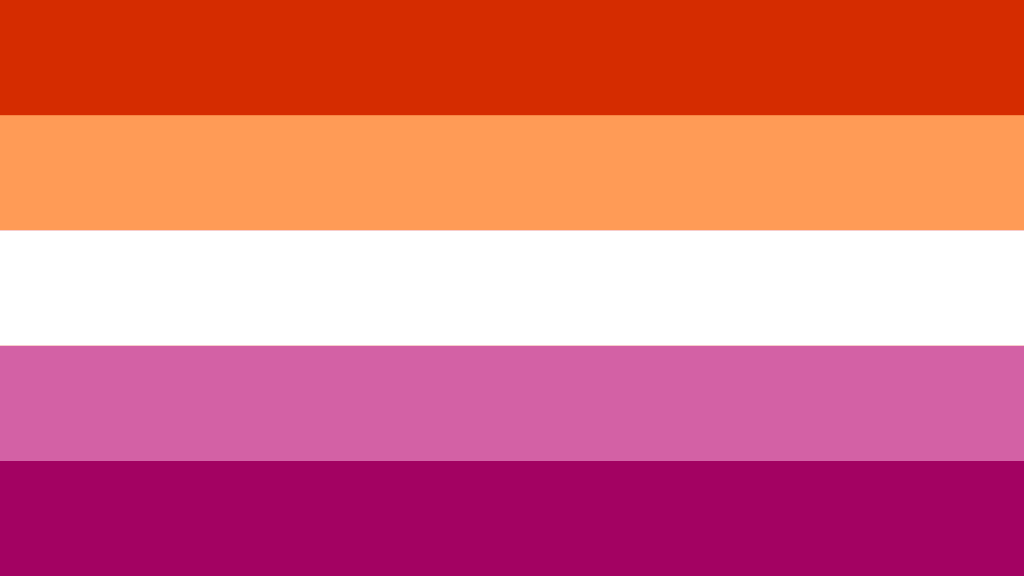

Bisexual Flag
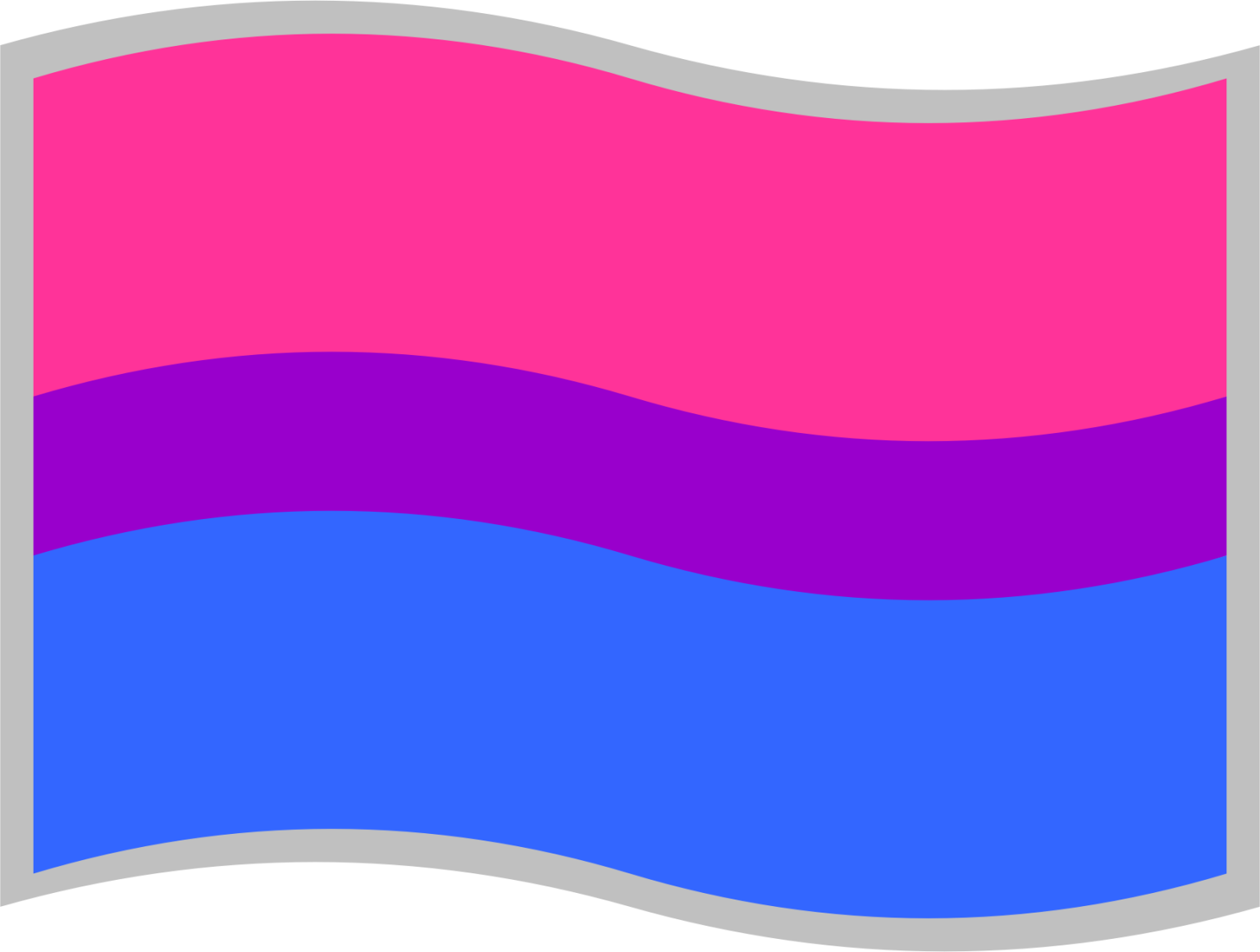
The bisexual pride flag made its appearance in 1998, designed by Michael Page, with the message that attraction to the opposite and same gender is valid and embraced. The purple stripe in the middle represents attraction to both genders, and the pink stripe for female blue stripe for male attractions. This bisexual pride flag will be visible at most all Pride events.
Trans Flag
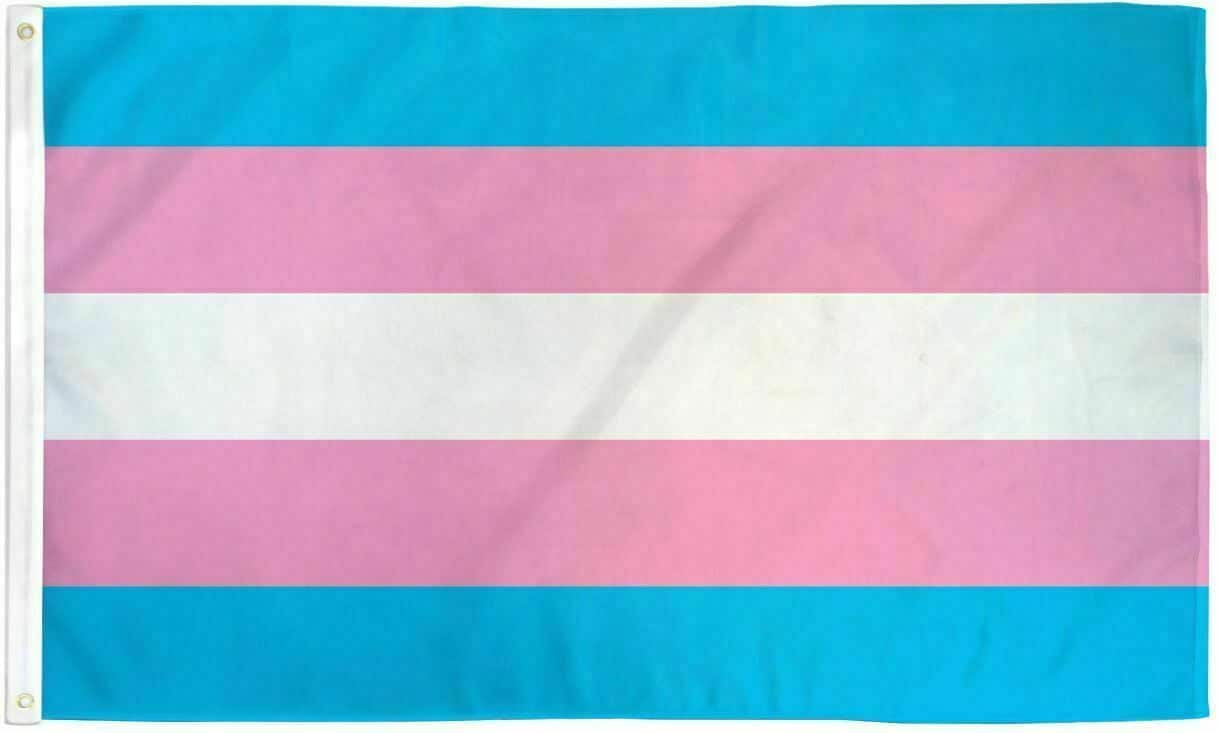
This pride trans flag was created by Monica Helms, a transgender woman, who came out in 1987. She became a well-known activist in San Francisco and created the transgender pride flag in 1999.
The light blue and pink stripes represent trans male and trans female people, and the white stripe represents the non-binary. The trans pride flag gradually gained popularity and is now a common sight at Pride events, promoting acceptance of everyone’s right to gender identity. No one to date has proposed any changes to the original transgender pride flag.
Drag Pride Flag
Here are two drag pride flags.
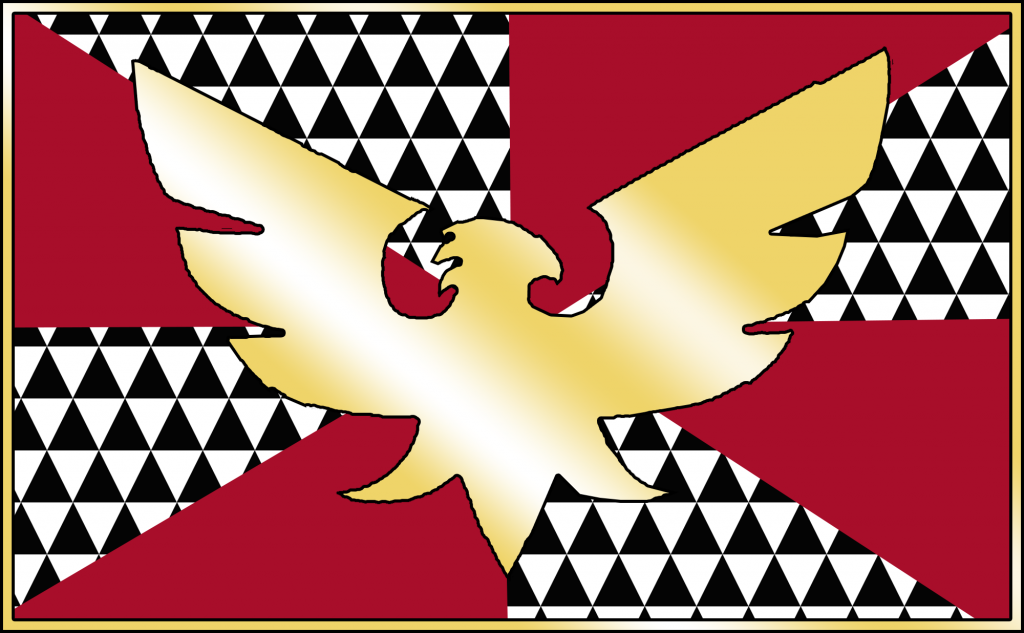
The first drag pride flag was created by Sean Campbell in 1999 and was called the feather pride flag. The phoenix was a symbol of rebirth, and the background represented the passion the drag community has to support and fund important and worthy causes.
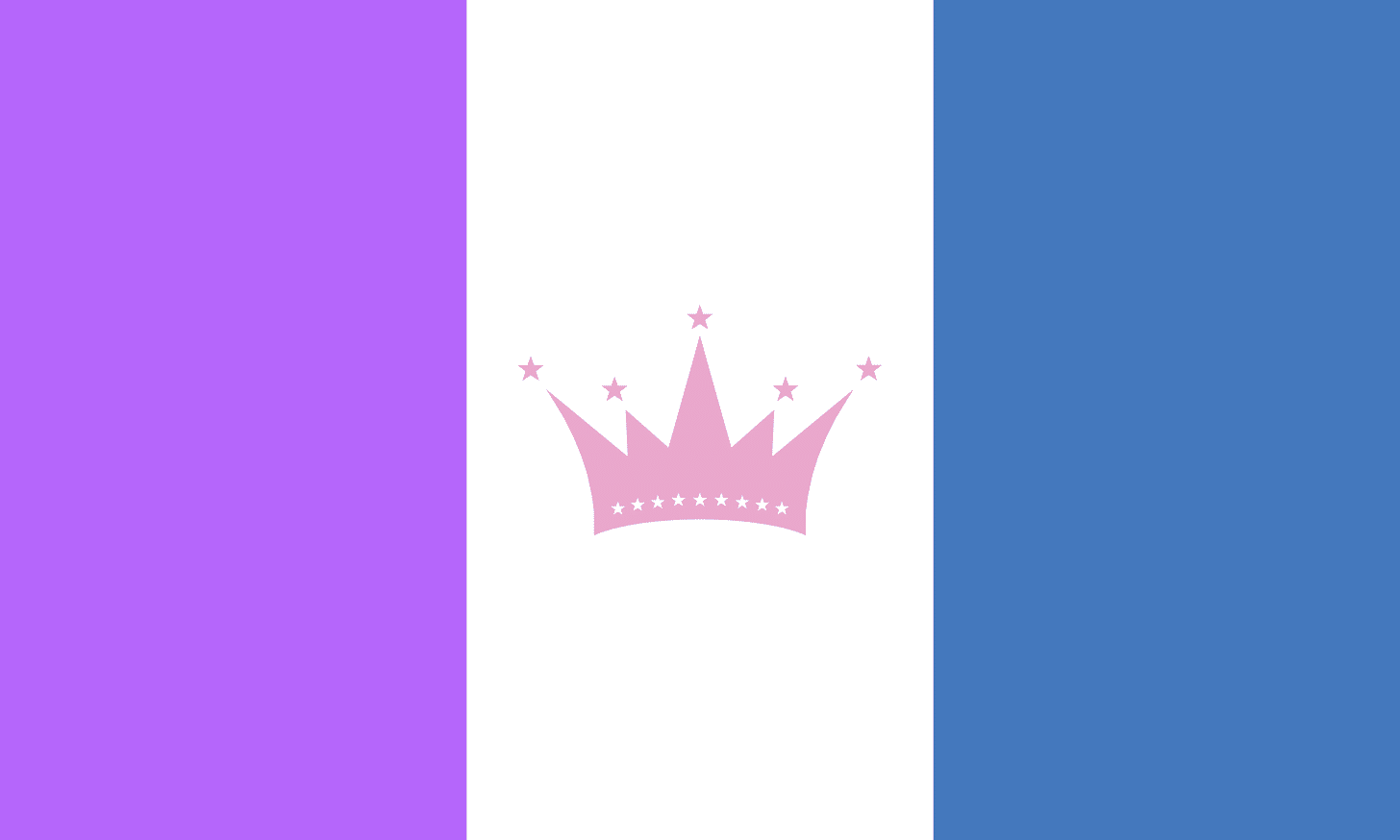
A second and more dominant pride flag came to be in 2016, as the result of a contest organized by the Austin International Drag Festival organizers. The contestants were to create a flag that would be a permanent symbol of the community that “loves, shares, embraces, and entertains the crap out of people everywhere.
This pride flag was created by Veranda L’Ni with the following meaning:
Purple symbolizes the passion for drag that everyone in the community shares
White symbolizes the fact that all persons of drag have a blank face and body slate until they create the characters they want to become
Blue is for self-expression and loyalty
Crown represents taking leadership in the larger community
Stars symbolize the many forms that drag takes
Intersex Pride Flag
An intersex person is one with both male and female physical characteristics and who do not fit the gender binary identity. The Intersex Human Rights Australia designed this intersex pride flag in 2013. The goal of this advocacy group was to design an intersex flag that was nothing like the typically gendered horizontal stripes and the blue and pink stripes of other pride flags.
According to this advocacy group, as it described the intersex flag, “The circle is unbroken and un-ornamented, symbolizing wholeness and completeness, and our potentialities…this symbolizes the right to be who and how we want to be.”
Pansexual Pride Flag
Pansexuals are those who are attracted to people regardless of their gender identity – those with the typical gender binary (masculine and feminine identities) as well as the agender, nonbinary, genderqueer, androgynous, or anyone else not identifying as gender binary.
The pansexual pride flag made its debut on the Internet around 2010 and quickly caught on.
The hot pink stripe represents attraction to those who identify as female; the blue represents attraction to the male gender, and the yellow strip in the middle stands for attraction to those who do not fit the gender binary identity.
Genderfluid Pride Flag
JJ Poole, an agender pansexual from New York, designed the Genderfluid pride flag in 2013. He wanted to symbolize people whose gender identity or orientation is fluid and will change from time to time.
This pride flag has five horizontal stripes – hot pink for femininity, white for agender, purple for the combination of male and female, black stripe for all genders on the spectrum, and the blue represents masculinity.
Graysexual Pride Flag
Graysexuals are those people who have limited or sporadic physical attraction to others, no matter what the gender expression or orientation.
The graysexual pride flag is comprised of gray stripes to symbolize the spectrum of physical attraction, the purple for different types of people they may be attracted to at times, and the white stripe refers to trans and nonbinary people to whom they might have attraction to at different times in their lives. Above all, this flag is meant to honor the validity of the experiences graysexuals may have.
Asexual Pride Flag
Asexual folks lack physical attractions or feeling to others, no matter what their gender or orientation.
The asexual pride flag came about as a result of a contest held by the Asexual Visibility and Education Network (AVEN) in 2010. This asexual flag was the result. It has the typical horizontal stripes of other pride flags, each with a specific meaning.
- Black represents asexuality in general
- Gary refers to those who are graysexuals or their close cousins, demisexuals
- White represents non-asexual partners, especially allies
- Purple stands for the asexual community as a whole, as it does with many other pride flags.
Bigender Pride Flag
OK. So, here’s the deal with being bigender. It can refer to those folks who have both male and female gender expressions. Or it can refer to the larger definition of bigender to include folks who are of one gender and any of a number of nonbinary or androgynous genders.
The most current bigender pride flag features seven horizontal stripes, representing all of the possibilities of being bigender:
- Hot pink, lighter pink and blue stripes represent however a person is feeling about their genders (masculine, feminine, androgynous, etc.)
- Purple at the top stands for any kinds of satisfactory relationships between bigenders and others
- White is symbolic of each bigender’s unique experience whatever that may be, and for honoring the experiences of other bigenders.
- The bottom purple stripe refers to pride, self-respect, and being true to oneself.
Agender Pride Flag
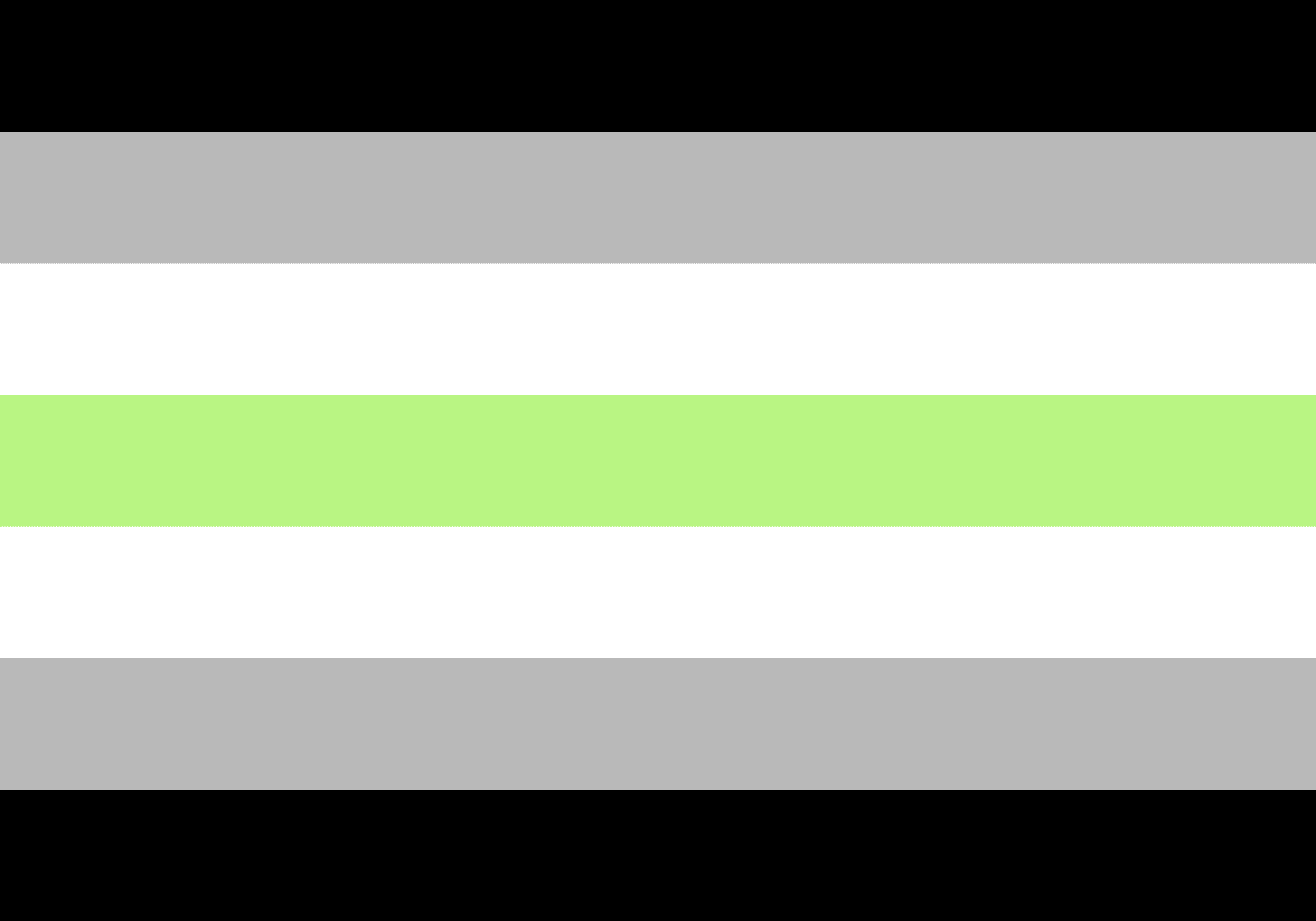
Agender people do not identify with the male or female or often even without nonbinary genders. the term first appeared on the internet when a user posted about God being amorphous and agender and thus people can also be.
The agender pride flag was designed by Tumblr user Salem X in 2014. The purpose of the design has been to embrace the individual’s unique experience with gender or not experiencing gender at all. It’s a wide range.
This seven-stripe flag has stripes with the following color meanings:
- Black stands for the absence of gender identity along with strength of the agender population
- Gray refers to partial gender identity along with gender fluidity which is a common experience for agenders
- White stripe refers to gender neutrality – not identifying as either male or female
- Green represents the entire agender community in all of its individuality and the need for acceptance
Genderqueer Flag
This pride flag of three stripes represents one form of non-binary identity. The flag was created by Marilyn Roxie, a queergender filmmaker and musician, in 2011.
Each of the three stripes mean the following:
- Lavender stripe refers to androgyny
- White stripe is for agender people
- Green represents all non-binary identities.
The Poly Pride Flags
The Polysexual Pride Flag
Polysexuals are people who are attracted to at least two genders, often more, but not necessarily all genders.
Sometimes it is an umbrella term that includes bisexuals and pansexuals, but it is most often used as an identity all its own.
The hot pink stripe represents attraction to females, the blue attraction to males, and the green stripe refers to attraction to those of other gender identities.
Polyamorous Pride Flag(s)
Polyamorous people have open, non-monogamous romantic relationships with two or more people at the same time. Many of them may also identify with other orientations on the LGBTQ+ spectrum.
The most recent polyamory flag was designed by Red Howell as part of the organization Polyamproud’s contest to design a new pride flag for the community in 2022. The winner was the flag shown above.
White represents a blank canvas symbolizing the right of polyamorous people to love whoever they want, whenever they want
Magenta refers to love, attraction, and desire and a deep emotional bond that can exist between polyams and their lovers.
Blue refers to being open and honest
Purple stands for unity of this community
Gold represents energy and perseverance
Before this new flag, another flag existed, and many still prefer this one.
This pride flag with three horizontal stripes was designed by Jim Evans in 1995. Colors and meanings are as follows:
Blue stripe for openness and honesty among all partners
Red for love and passion
Black stripe represents solidarity among and for those who must hide relationships
The Greek pi sign symbolizes emotional attachment and also the fact that pi is the Greek letter “p”
Non-Binary Flag
Non-binary people do not identify as either male or female, and some describe themselves as gender neutral. Still others are a mix of male and female.
The flag with was designed by a 17-year-old in 2014. It features four horizontal stripes:
- Yellow stripe of any gender that is separate from binary
- White is for those people who identify as being multiple genders
- Purple stands for those who are a mix of female and male (e.g., intersex)
- Black represents those with not gender at all – gender neutral if you will.
Gender Fluid Pride Flag
Genderfluids discover that their gender identity may shift back and forth or among several genders. Usually, they are included under the umbrella of the non-binary, but they also have their own pride flag.
This five-stripe flag encapsulates all that the genderfluid identity may encompass:
Pink and blue are obviously for masculinity and femininity
The purple stripe represents both masculine and feminine identities.
The black and white stripes represent both extremes of being gender fluid – white for all genders and black for no genders at all.
Two Spirit Pride Flag
Talk about a type of the traditional pride flag, this would be it – red, orange, yellow, green and then blue and purple.
Some Native Americans identify as being of two-spirits, which are outside of the male/female binary, and that becomes a gender or, in their words, spiritual identity.
No one knows when this pride flag was created, but every piece is meaningful.
The two feathers stand for the masculine and feminine gender identities. And the circle is a symbol for the meshing of these two identities into a totally separate gender.
The red, orange, yellow, green, blue and purple stripes represent all modern LGBTQ identities.
Queer People of Color Pride Flag
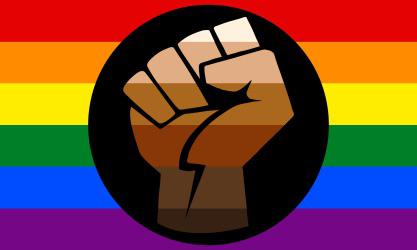
This banner begins with the six-color rainbow flag. But superimposed on that official flag is the symbol of Black Pride and the Black Lives Matter movement with the classic black and brown colors.
The author of this flag is unknown, but it first showed up during the June pride month in San Francisco in 2019.
It’s pretty easy to put together the symbolism of this combination. Rainbow banners represent the queer community but also the continued challenges the community faces to gain full equality. And, of course, these are the same challenges faced by people of color throughout history. There is obvious solidarity between the two movements.
Are There More?
Attend any Pride Parade in a major city, and you are likely to see many if not most of these flags. From the traditional pride flag of six stripes, to the inclusive Progress Pride Flag along with the intersex inclusive progress pride flag, to all of the many subcultures within the LGBTQ+ community, every major Pride event will be a full array of colors. Those colors will be in the form of flags, clothing, and more. All colors and hues creating a nature’s prism for the prism that is humankind.


